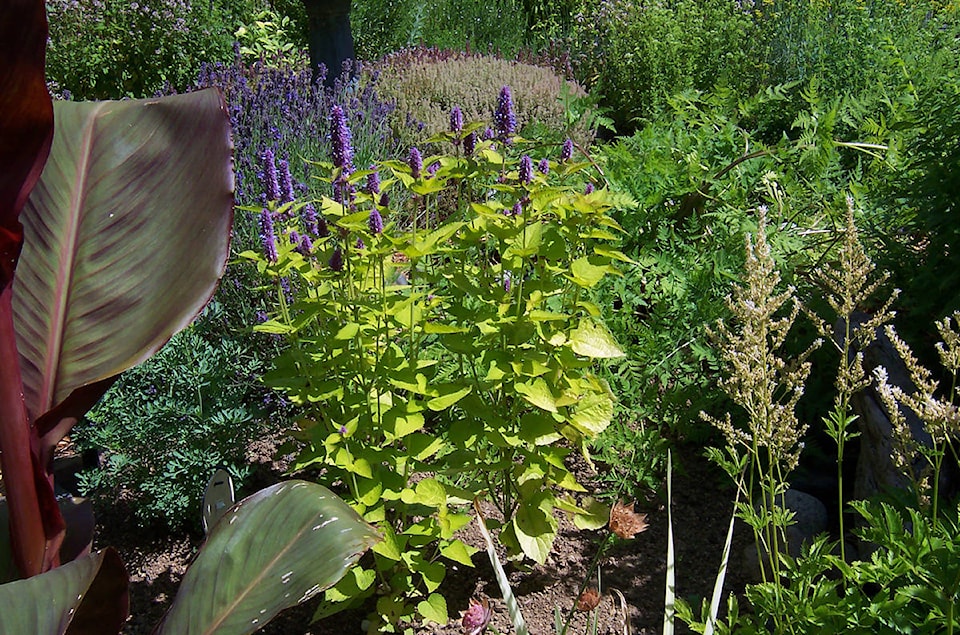Leslie Cox
Special to The Record
There is nothing like a brand new year to get gardeners excited – starting with the seed catalogues arriving in the mail and to my inbox.
I know. It costs trees to produce the paper versions, but thankfully a healthy percentage of recycling is happening at most paper mills. And I only order paper catalogues from my three favourite seed suppliers.
But all is not about seeds for the new gardening season. Indeed. The Perennial Plant Association (PPA) has made its plant selection to celebrate in 2018: Allium ‘Millenium.’ This is an ornamental onion which has surprisingly been on the market for the last 18 years.
The PPA has not stated the specific reason for selecting this cultivar so long after its initial introduction, but it has been effusive in describing the plant’s attributes, not the least of which is “butterfly magnet” and “workhorse.”
Also confusing is that alliums are more generally thought of as herbs and vegetables. Chives, shallots, onions, leeks, and garlic are all classified in this genus. It therefore could have been touted Herb of the Year by the International Herb Society (IHS) instead, especially since all parts of the plant are edible. And yet it is labeled as an “ornamental” allium.
But still not to be ignored for its uses in the landscape design. As a “workhorse,” it tolerates drought and poorer soil conditions, although it does prefer good drainage and some shade on really hot, sunny days. It exhibits excellent pest and disease resistance, and gets bonus marks for being deer- and rabbit-proof.
Reading up on the description for Millenium: clump of shiny green, strap-like foliage to 15 inches and flower stems rising above, topped with two-inch spherical umbels of rosy-purple florets which last up to four weeks. I am hooked and now on the hunt for this allium.
Being a “butterfly magnet” cannot be overlooked either because it will also bring in the bees to our garden.
And the same is true of the International Herb Society’s selection for 2018 Herb of the Year: Agastache foeniculum. Commonly known as anise hyssop, this plant is certainly not a new introduction on the market either, but deserves to be honoured nonetheless. We have had this plant in our garden for years and can definitely speak to its attributes.
First and foremost is its outstanding ability to lure bees and butterflies to the garden. It is sun tolerant and decently drought resistant. Pest and disease resistance is reasonable as long as its basic needs are met.
This is where “decently drought resistant” comes in. Aphids can become a problem if this plant does not get a little water throughout a drought period. Agastache foeniculum is in the mint family – a clue it cannot handle total water starvation. But it does not need much. Just enough so the plant does not stress unduly.
Being a member of the mint family is also an indication anise hyssop prefers good air ventilation. If crowded, the plant can develop unsightly powdery mildew on its leaves, rendering them unusable for use in the kitchen.
And this plant is edible, as its common name tells us. The leaves impart a subtle licorice flavour – refreshing in a cup of tea and intriguing in a green salad. Mixed in with oregano, basil, a dash of cinnamon and some extra virgin olive oil, it makes a fabulous rub for a leg of lamb.
As for Vegetable of the Year, there is good news according to one UK website. It is forecasting 2018 will be the Year of the Vegetable. All vegetables.
This could be a good thing for those who have made diet resolutions for 2018.
Leslie Cox co-owns Growing Concern Cottage Garden in Black Creek. Her website is at www.duchessofdirt.ca and her column appears every second Thursday in the Record.
